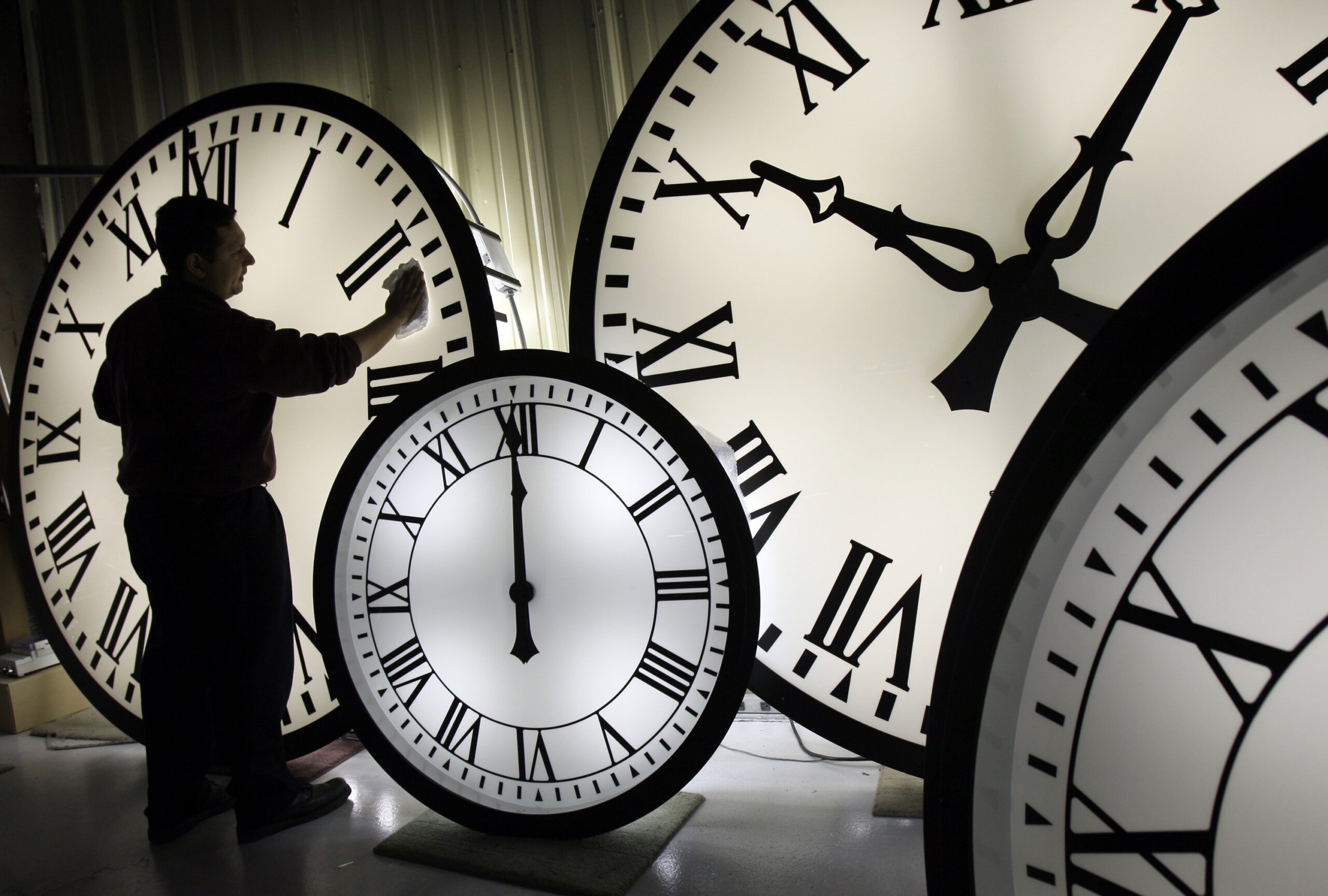Daylight Saving Time (DST) is a biannual ritual that many Americans dread. As we approach 2025, the question on everyone’s mind is: When is the time change 2025? While the practice of adjusting clocks to extend daylight hours has been around for over a century, its relevance and benefits remain hotly debated.
This article will explore the dates of the 2025 time change, explain how it works, and provide tips to help you adapt smoothly. Whether you’re looking forward to an extra hour of sleep or dreading the disruption, this guide has everything you need to know.
Understanding Daylight Saving Time
Before diving into the 2025 dates, it’s important to understand what DST actually is. Daylight Saving Time is the practice of setting clocks forward by one hour during the warmer months to make better use of natural daylight. The goal, originally, was to conserve energy by reducing the need for artificial lighting in the evenings.
However, as the reference text notes, DST doesn’t actually “save” daylight—it only shifts the time of sunrise and sunset. This means that the total amount of daylight remains the same throughout the year; it’s just distributed differently.
The tradition of DST began in the early 20th century, with Germany being the first country to implement it in 1916. Canada followed shortly after, with Port Arthur, Ontario (now Thunder Bay), becoming the first city to observe DST on July 1, 1908. Since then, the practice has spread to many countries, though not all participate.
In the United States, DST is regulated by the Department of Transportation and follows a set schedule: it begins on the second Sunday in March and ends on the first Sunday in November.
When Is the Time Change 2025?
For 2025, the time change will occur on two key dates:
- Spring Forward (Start of DST): Sunday, March 9, 2025
- Fall Back (End of DST): Sunday, November 2, 2025
These dates are consistent with the current rules established by the Energy Policy Act of 2005, which extended DST to cover more than six months of the year.
On March 9, clocks will be moved forward by one hour, effectively giving people less daylight in the evening but more in the morning. Then, on November 2, clocks will be turned back, providing an extra hour of sleep and more daylight in the evening.
It’s also worth noting that not all U.S. states observe DST. According to the National Institute of Standards and Technology (NIST), the following regions do not follow the time change:
- Hawaii
- American Samoa
- Guam
- Northern Mariana Islands
- Puerto Rico
- U.S. Virgin Islands
- Most of Arizona
However, parts of Arizona, specifically the Navajo Nation, do observe DST.
Why Does Daylight Saving Time Happen?
The origins of DST date back to World War I, when it was introduced as a way to conserve energy and support the war effort. In 1918, the U.S. implemented a national daylight saving policy under the Standard Time Act. However, it was repealed after the war ended, only to be reintroduced during World War II.
After the war, the practice became more permanent with the passage of the Uniform Time Act in 1966, which standardized the start and end dates of DST across the country. In 2005, President George W. Bush signed the Energy Policy Act, extending DST to its current format.
Despite its long history, DST continues to be controversial. Many argue that it disrupts sleep patterns, affects productivity, and offers little real benefit. Others believe it helps reduce energy consumption and promotes outdoor activities.
The Impact of the Time Change on Daily Life
Adjusting your clock twice a year can have more than just a minor effect on your schedule. The shift in time can impact your circadian rhythm, leading to fatigue, irritability, and even health issues. Here are some ways the 2025 time change may affect you:
1. Sleep Disruption
Changing the clocks can throw off your internal body clock, making it harder to fall asleep or wake up. This is especially true for those who already struggle with sleep disorders.
2. Increased Alertness
Some people find that the “spring forward” time change gives them an extra hour of light in the morning, which can improve mood and energy levels.
3. Safety Concerns
Studies have shown that the time change can increase the risk of car accidents, particularly in the days following the shift. This is often attributed to sleep deprivation and changes in traffic patterns.
4. Business and Scheduling
Businesses and schools may need to adjust schedules, and some industries, such as transportation and healthcare, may experience disruptions due to the time change.
Tips for Coping with the 2025 Time Change
If you’re feeling anxious about the upcoming time change, there are several steps you can take to ease the transition:
1. Adjust Gradually
Start shifting your bedtime and wake-up time by 10–15 minutes each day in the week leading up to the change. This will help your body adjust more smoothly.
2. Get Natural Light
Exposure to sunlight in the morning can help reset your internal clock. Try to spend at least 15 minutes outside shortly after waking up.
3. Limit Caffeine
Avoid consuming caffeine late in the day, as it can interfere with your ability to fall asleep.
4. Maintain a Routine
Stick to your regular sleep and meal times, even on weekends. Consistency is key to maintaining a healthy circadian rhythm.
5. Plan Ahead
If possible, avoid scheduling major events or tasks right after the time change. Give yourself a few days to adjust before jumping into a busy schedule.
Frequently Asked Questions About the 2025 Time Change

Q: When does Daylight Saving Time start in 2025?
A: Daylight Saving Time starts on Sunday, March 9, 2025.
Q: When does Daylight Saving Time end in 2025?
A: Daylight Saving Time ends on Sunday, November 2, 2025.
Q: Which U.S. states don’t observe Daylight Saving Time?
A: Hawaii, American Samoa, Guam, Northern Mariana Islands, Puerto Rico, the U.S. Virgin Islands, and most of Arizona do not observe DST.
Q: Why was Daylight Saving Time created?
A: DST was originally introduced during World War I to conserve energy and promote efficiency. It was later expanded and formalized through various laws and acts.
Q: Does Daylight Saving Time save energy?
A: The original intent of DST was to save energy by reducing the need for artificial lighting. However, modern studies suggest that the energy savings are minimal, and the practice has become more of a convenience than a necessity.
The Future of Daylight Saving Time
As the debate over DST continues, many are calling for its abolition. In 2019, the European Union voted to end seasonal time changes, but the plan was delayed. In the U.S., several states have introduced legislation to eliminate DST, but federal law currently blocks any permanent changes without congressional approval.
While the future of DST remains uncertain, the 2025 time change will still occur as scheduled. For now, the best advice is to prepare for the shift and make adjustments that work for you.
Conclusion
The 2025 time change will take place on March 9 and November 2, marking the beginning and end of Daylight Saving Time. While the practice has its supporters and critics, it remains a part of American life. By understanding how DST works and preparing for the changes, you can minimize its impact and enjoy the benefits of extended daylight.
Whether you’re looking forward to an extra hour of sleep or dreading the disruption, staying informed is the key to a smooth transition. As always, keep an eye on local news and official sources for the latest updates.
Stay updated with the latest news and stay ahead of the curve.
Author: [Name]
Title/Role: [Journalist and Expert in Time Management and Public Policy]
Credentials: [With over a decade of experience covering U.S. policy and lifestyle trends, the author provides in-depth analysis on topics ranging from public health to technological advancements.]
Profile Link: [Optional: link to professional profile]
Sources:
– National Institute of Standards and Technology (NIST)
– U.S. Department of Transportation
– CDC – Sleep and Health
Internal Links:
– Understanding Time Zones in the U.S.
– The History of Daylight Saving Time
– Tips for Better Sleep
Schema Markup:
<script type="application/ld+json">
{
"@context": "https://schema.org",
"@type": "Article",
"headline": "When Is the Time Change 2025: Key Dates and What It Means for You",
"datePublished": "2025-01-01",
"dateModified": "2025-01-01",
"author": {
"@type": "Person",
"name": "[Name]"
},
"publisher": {
"@type": "Organization",
"name": "US Trending News",
"logo": {
"@type": "ImageObject",
"url": "[Logo URL]"
}
},
"description": "Find out when the time change 2025 occurs and how it affects your daily routine."
}
</script>
Alt Text for Images:
–
–
– 
–
–












More Stories
Winter 2025-26 U.S. Weather Forecast: What to Expect Across the Country
When Is the Next Meteor Shower Tonight? Your Guide to Peak Viewing Times
US Trending News: What’s the Weather Like in Nashville? Current Conditions and Forecast